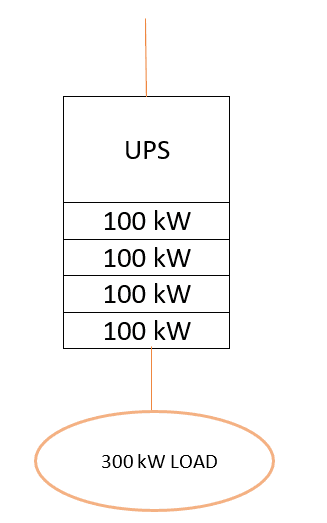UPS users of all sizes mostly view power resilience and efficiency as their two highest priorities. While the balance between these factors varies according to the load’s size and criticality, the power efficiency aspect is assuming an ever-increasing urgency. Organisations today must improve efficiency not just to reduce costs, but also to demonstrate a responsible, green energy policy. Further, they must be government-compliant, as highlighted by Theresa May’s commitment to achieve net zero carbon emissions by 2050.
In this article, Alex Emms, Operations Director at KOHLER Uninterruptible Power, exemplifies this trend before explaining why the search for ever-improving efficiency can conflict with the Uptime Institute’s Tier lV redundancy and resiliency requirements. He then proposes a solution that uses smart modular UPS technology while providing upfront assistance during the design phase.
Sustainability as the fastest-rising data centre concern
DigiPlex, a pan-Nordic green data centre operator, has released a survey of almost 300 decision-makers in Sweden and Norway, titled ‘A Perfect Storm: Nordic Data Centre Trends 2018’, containing extensive research into changing attitudes and business priorities. Survey results revealed ‘Sustainability’ to be the fastest-rising data centre concern, from 27th place to fourth place in just the two years since the 2016 survey.
Carbon costs are becoming a global issue, with activist pressure from groups like Greenpeace and increased government awareness pointing to potential fines, new taxes or reputation damage down the line.
Tier classification and redundancy
The Uptime Institute’s four-tier classification system allows users to balance resilience levels against cost. Fig.1 shows the uptime requirements for the four levels. However, the uptimes are achieved through various redundancy levels, which have differing impacts on UPS utilisation and efficiency.
Fig.1: Uptime Institute Tier levels and availabilities
Tier ll, for example, calls for redundant capacity components and single non-redundant distribution paths to site computer equipment. This could be fulfilled by two standalone UPSs on a single path, each rated at 300 kW. The N+1 redundancy requirement is satisfied; however, neither UPS will ever be utilised beyond 50 percent. Unusually low data centre demand could push UPS loading into a less-efficient operating region.
Fig.2’s modular system provides a better solution:
Fig.2: N+1 modular UPS configuration for a Tier ll installation
This configuration could be fulfilled, for example, by a KOHLER PW 9500DPA modular UPS system. With four 100 kW modules supporting the 300 kW load for N+1 redundancy, per-module utilisation improves to 75 percent; more margin for energy-efficient operation.
This energy efficiency issue is more problematic in Tier lV infrastructures, which call for redundant capacity systems and multiple distribution paths. A 2(N+1) UPS system, as shown in Fig.3, can meet this requirement.
Fig.3: 2(N+1) modular UPS configuration for a Tier lV installation
Fig. 3’s configuration, although modular, has a maximum utilisation per module of 37.5 percent; uncomfortably close to the UPS’s inefficient operating region. However, it’s possible to overcome this issue using smart modules, as described below.
Xtra VFI smart module switching
Efficiency for modern, modular UPS systems remains high for most load values, only falling significantly once loading drops to 25 percent or less. Accordingly, the 37.5 percent 2(N+1) loading, while low, still allows full-efficiency operation provided it is maintained.
Xtra VFI achieves this ‘load level maintenance’. The mode automatically adjusts the number of active modules to match current load requirements. Excess modules, while switched to standby, become active immediately if the load increases.
Suppose, for example, Fig.3’s load falls to 200 kW. The per-module loading drops to 25 percent accordingly. However, Xtra VFI could then disconnect one 100 kW module per UPS while still preserving 2(N+1) redundancy for the reduced load. Meanwhile, utilisation improves back to 200 kW/6 modules = 33.33 percent, so the UPS continues supporting the reduced load with both full redundancy and full efficiency.

Fig.1: How Xtra VFI improves UPS energy efficiency at low loads
Fig.4: Xtra VFI mode energy efficiency benefits
Fig.4 shows the Xtra VFI mode’s benefits. When the system calculates the module switching needed for maximum efficiency, it allows for the redundancy required.
Finding the optimum solution; a consultative approach
From this article we can see that the optimum UPS solution for any installation depends entirely on its circumstances and priorities. Accordingly, when KUP sales engineers discuss new projects with clients, they take a consultative approach. They find that informal, wide-ranging conversations can be the most productive, as these can surface not only the obvious issues, but others that are less so, yet also important. A good starting-point can be to discuss configurations that will help a client to best balance their expectations of budget, resilience and energy efficiency.
Conclusion
Whether embarking on a new-build project or an existing system upgrade, UPS system users will benefit greatly from engaging with a supplier like KOHLER Uninterruptible Power, whose advanced modular technology is backed by nationwide technical support and long-term business stability
Reference








